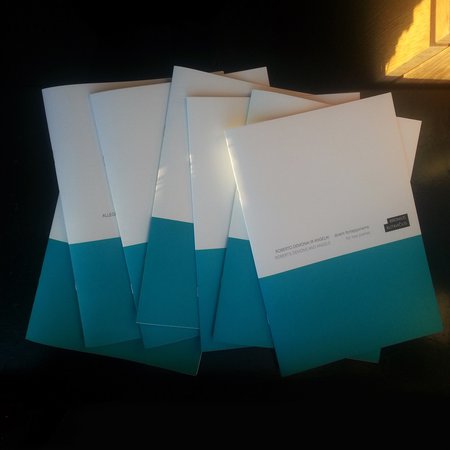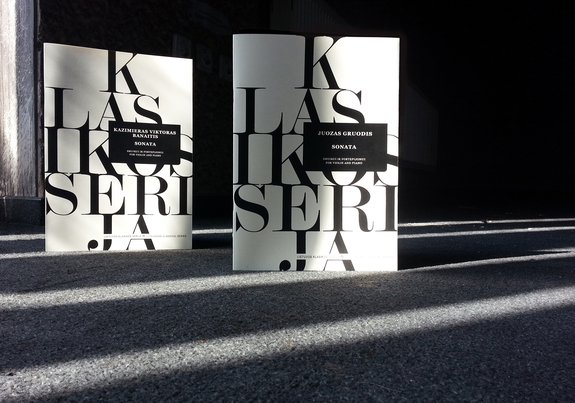The publication of sheet music as a minor publishing phenomenon
- Jan. 19, 2017
Music Information Centre Lithuania (MICL) has already for a couple of decades now been carrying out this ‘minor publishing’ activity, by stimulating the supply of sheet music of work by Lithuanian composers, from classics from the beginning of the 20th century to the work of young authors today, from compositions written to fulfil the exacting requirements of competitions to those serving the needs of popular music aesthetics, and taking in the full range from concert repertoire to educational pieces for beginners. In 2016 MICL published 16 sheet music publications reviving a not inconsiderable repertoire in the field of musical practices. This project was made possible through partial financial support by the Lithuanian Council for Culture and the Ministry of Culture of the Republic of Lithuania.
The Lithuanian Classics Series has been supplemented by two works, both sonatas for violin and piano, from the first half of the 20th century by Juozas Gruodis and Kazimieras Viktoras Banaitis. Gruodis’s Sonata for violin and piano (1922), the first example of this genre in Lithuanian music, has over almost a century gone through several editions, while in the new publication the violin part, edited by the British violinist Christopher Horner, aims to be as true to the original as possible. Both Gruodis’s work and Banaitis’s Sonata for violin and piano (1935) reflect the trend at the time of combining Lithuanian folk motives with a moderately modern musical language.
Thanks to the initiative of MICL, pianists in particular will be able to enrich their repertoire: two publications for solo piano and as many as seven compositions for two pianos came out in 2016. Last year the most highly rated works in the competition for new compositions for solo piano organised by the Lithuanian Composers’ Union and MICL were included in the collection Hammers without a Piano, which will undoubtedly inspire performers to meet the virtuosic challenges presented therein. Meanwhile, those searching for extreme asceticism and ritual can look to Šarūnas Nakas’s Kitman (2012). Daumantas Kirilauskas, who edited the composition and has recorded it on the included CD, asserts that ‘every acquaintance with new music is interesting’.As many as seven publications of sheet music were initiated and edited by the pianists Rūta Rikterė and Zbignevas Ibelhauptas, with enormous experience in the active dissemination of music by Lithuanian composers as a piano duo: ‘Over many years, a large number of pieces for two pianos have been written by Lithuanian composers. Understanding that this music is almost unknown, our wish was to disseminate and popularise it. I think that many of these works are aimed not only to professionals of the highest rank – they can be included in the programmes of music high schools, conservatoires and academies.’ These pieces open up fresh and multi-faceted musical experiences for piano duos, e.g. the virtuosic Toccata (2009) by Algimantas Kubiliūnas and Allegro brillante, op. 107 (1996) by Vytautas Barkauskas, the repetitive Sutapo (2010) by Gintaras Sodeika and Textile 1 (2006) by Egidija Medekšaitė, the fragmentarily varying Robert’s Demons and Angels (2007) by Bronius Kutavičius and Shards of Glass (2010) by Jurgita Mieželytė, and the playful Twins (2009) by Giedrius Kuprevičius.
Two new collections of educational compositions are aimed at fostering an early positive contact with contemporary Lithuanian music. The collection The Little Bridge is aimed at violinists in beginners’ classes, while the publication Why? is for vocalists of all ages. The latter publication was inspired by the aim of getting pupils to become interested as early as possible in contemporary music that sounds fresh and responds to the times they live in: ‘The wish was for composers in the new Millennium to write songs for young Millennials,’ says Gintarė Skėrytė, the compiler and editor of the collection.Competitions important for the professional growth of students not infrequently lead to active participation in the process of an education in contemporary music. The International Juozas Pakalnis Wind Instrument Competition obliges the participants to come into contact with contemporary Lithuanian music and its compulsory pieces by Lithuanian composers can be found in the collection Segments published by MICL.
Two publications of Teisutis Makačinas’s compositions, a successful confluence of academic and popular music, will make those yearning for a catchy sound happy. The three-part suite for flute, viola and piano Margins (2005) was initiated and edited by Rolandas Romoslauskas, the artistic director of the ensemble Vilniaus Arsenalas, who has this to say: ‘There are very few lively compositions that aim to entertain in Lithuanian music. This work supplements the modest repertoire of this kind of genre. The echoes of tension and catastrophism often heard in today’s compositions provoke a nostalgia for a beautiful and pleasant melody. To master entertainment-oriented genres is not so simple. It is good news that music like that will be more easily accessible for those simply wanting to make music.’ Another new publication of Makačinas’s music The Wind Told Me gives new meaning to songs that have become Lithuanian popular song classics and is an invitation to reproduce them in a new context.
All these sheet music publications can be purchased at Music Information Centre Lithuania.
Paulina Nalivaikaitė
Translated from the Lithuanian by Romas Kinka


